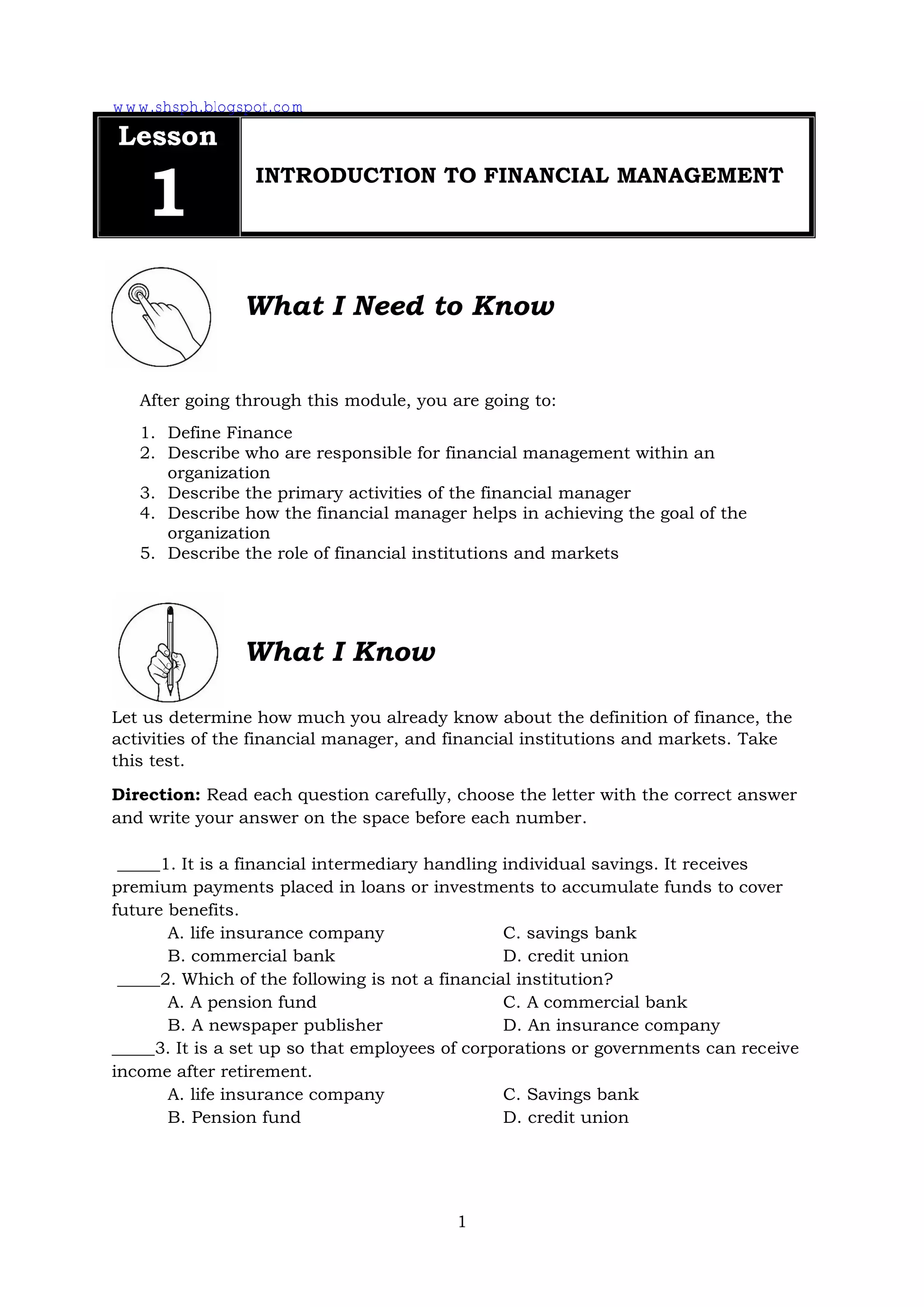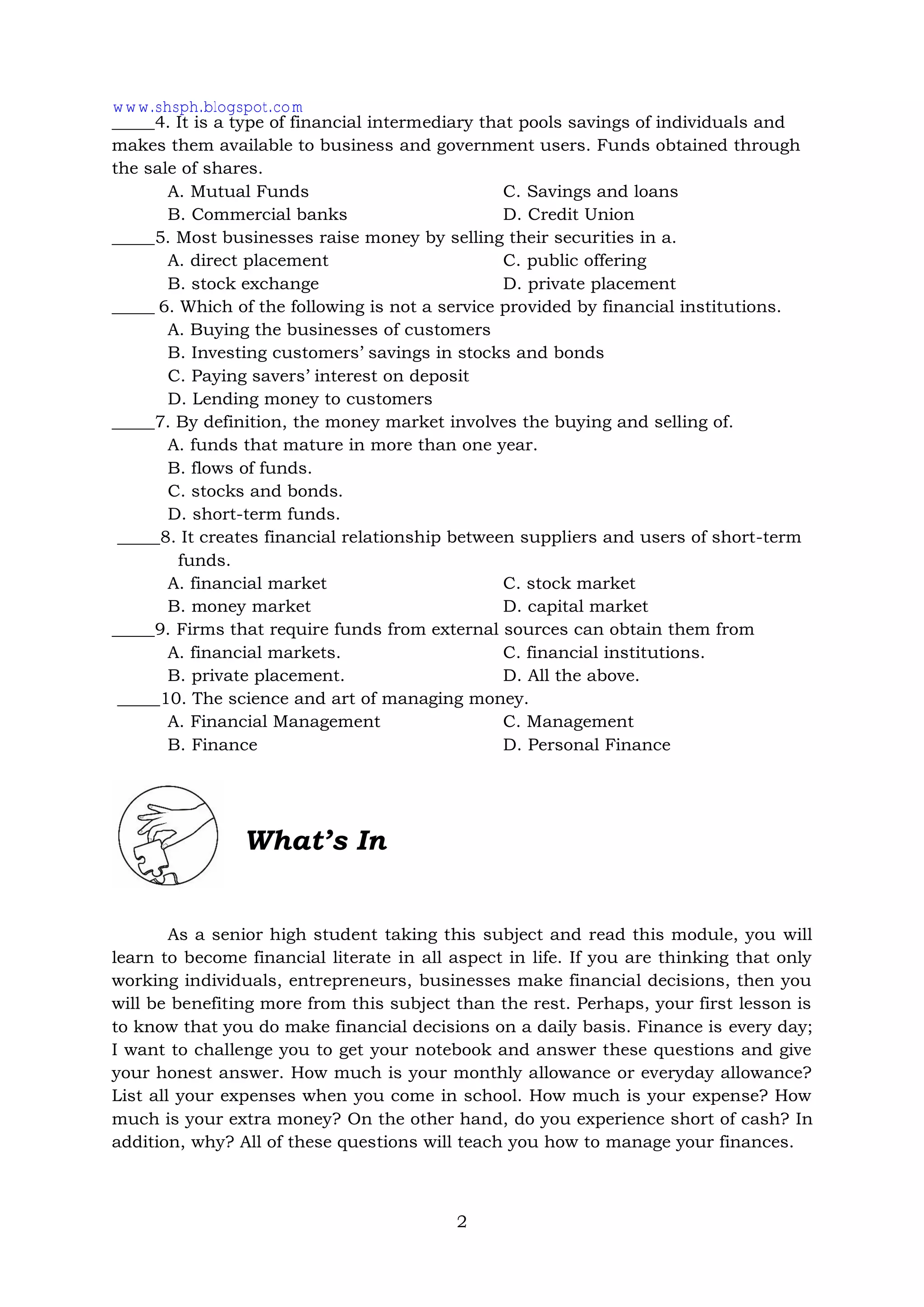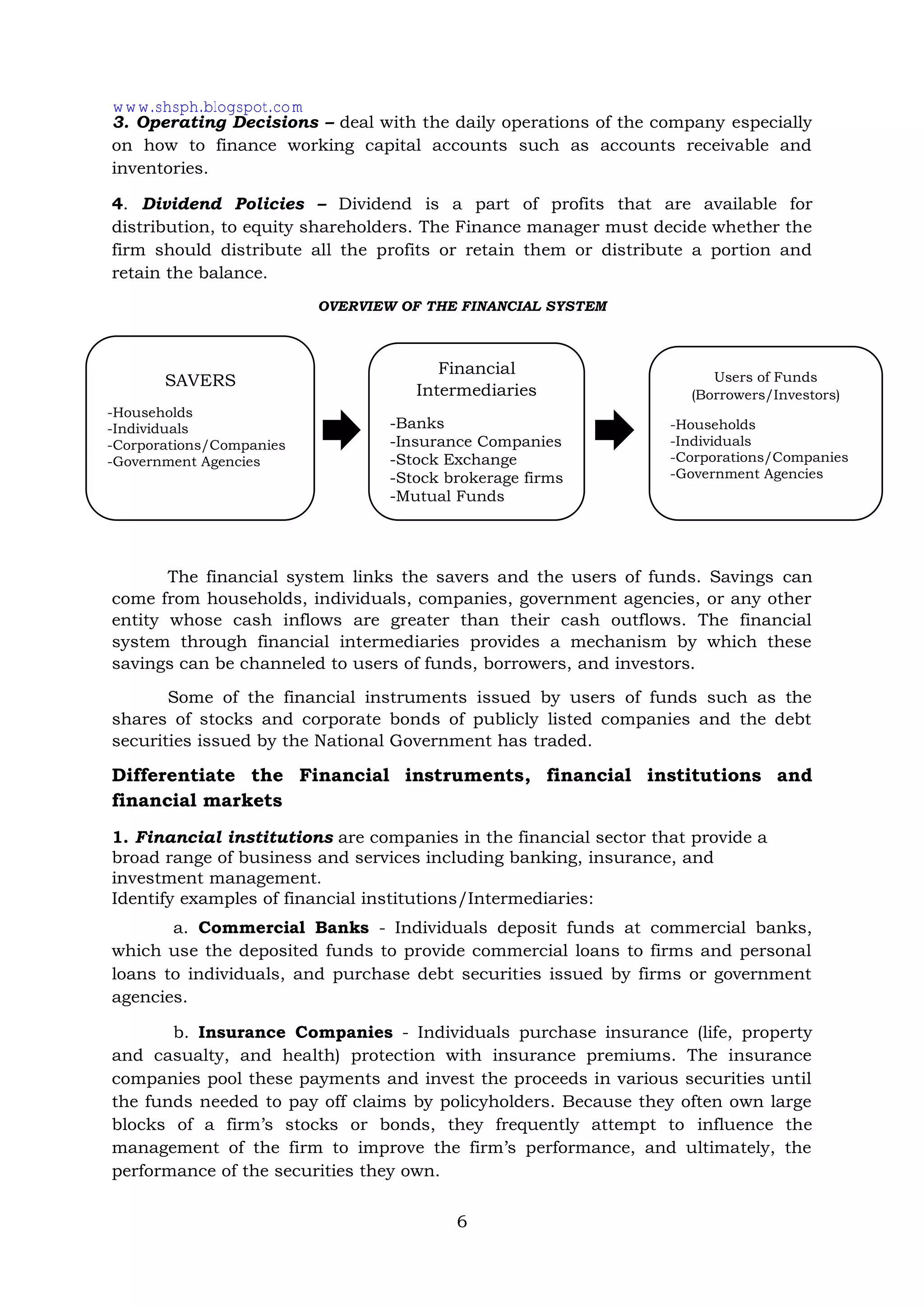1. Financial management deals with decisions that maximize shareholder wealth through activities like financing, investing, and dividend policies.
2. The organizational structure of a company establishes clear roles and responsibilities in decision making, with the shareholders' interest in wealth maximization flowing down through boards of directors and managers.
3. Financial institutions like banks and insurance companies link savers and users of funds by collecting deposits and premiums for investment and lending.





















